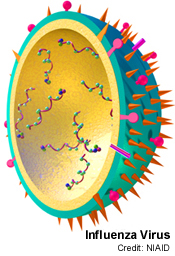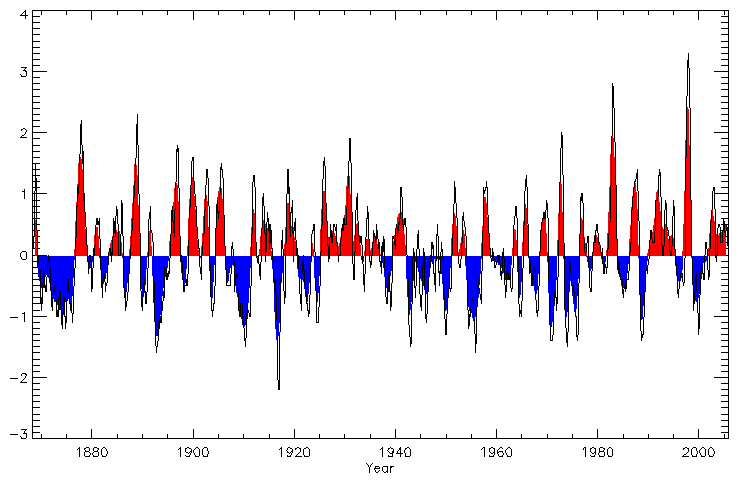
It is again the season of the influenza virus – from October to February we see influenza outbreaks all over the United States and throughout other parts of the world. So, most people are faced with the question: should I get the flu shot?
Barring exceptions (allergies to a component of the vaccine, etc.), the answer should be YES!
Reason 1: It prevents you from getting sick. Contrary to what a lot of people believe, vaccinations work.
Vaccines contain either a killed or weakened form of a virus or bacteria. The idea is to inject people with the killed or weakened form of the pathogen to give the immune system the ability to build up an immune response to a specific pathogen without actually infecting the individual and making them sick. This allows the immune system to respond stronger and faster if the individual actually does contract the pathogen.
When the killed/weakened form of the pathogen enters the body, the immune system identifies an antigen, which is a substance that the body notices is foreign. Then, the body releases antibodies, proteins that attack the foreign substances in the body. The body also generates immune response cells, some of which attack infected cells in the body and others help generate more antibodies. In the case of an immune response to a vaccine, after the body has neutralized the “threat,” which was really never a threat to the individual due to the weakened form of the pathogen, the immune system generates memory cells. These cells remember the pathogen and, when they interact with the pathogen again, they can then generate the same response faster and stronger (this is known as secondary response).
The flu shot that is commonly given in the United States is either trivalent (protects against three different viruses) or quadrivalent (protects against four different virues), so even if many strains are going around, it still could help.
There’s always a chance that you get the flu shot and you catch a different strain of the flu. It happens, but getting the flu shot drastically reduces your chances. And, even if you get the flu, the vaccine will probably make the illness far milder than it would have been otherwise (because your body is already prepared with antibodies).
Reason 2: Herd Immunity. If you’re not going to get it for yourself, get it for everyone else who interacts with you.
Not everyone can get vaccinated; sometimes vaccinations are only given to children above a certain age, sometimes people are allergic to an ingredient in the vaccination (some people allergic to eggs cannot take certain vaccines because they use the egg protein to suspend the pathogen), and other times the vaccine just didn’t work as effectively as it was supposed to, because nothing is perfect. For those people, it vastly minimizes the risk that they get the disease if everyone else is vaccinated, because it decreases the spreading. It is much harder for the pathogen to move from person to person if it keeps getting eradicated in vaccinated individuals.
(On a separate note, there are egg-free vaccines for people who are allergic and nasal spray for people who are scared of needles.)
How many people need to be vaccinated in order for the disease spread to slow? We can actually calculate that!
First, we have to consider the reproduction number of a disease (R). R represents the number of people an infected person would get sick. Because diseases like measles or the flu are really contagious, their R is very high. We want R < 1, because then the disease spread is slowing down. So, to find the proportion of the population that we want to vaccinate (let’s call that V), we want (1-V)*R < 1 (because 1-V represents all the unvaccinated people, and we want a disease in that population to not spread).
So, we can solve for V and get that V > 1-(1/R). So, if we know the R for the flu, we can actually find the number of people in the population we need to vaccinate. The problem is, if less people than that proportion V choose to get vaccinated, the disease spreads. So as many people as possible should get the flu shot! It can’t hurt for more people than V to get the vaccine, but it can hurt if less people do.
Reason 3: If you’ve never gotten the flu shot and never gotten the flu, that’s not a reason to continue not getting the flu shot. It just means you got lucky in the past, but your chances of getting the flu are still higher without the vaccine. We want herd immunity as well to protect the whole population, so it’s important that everyone get the vaccine.
If you want to learn more about what goes into vaccines, check out this other post: https://foodforscientificthought.wordpress.com/2014/06/04/vaccines-how-do-they-work/.
Getting the flu is not fun. It causes deaths across the world and, even at best, you’re in bed for days being miserable. If getting the vaccine reduces the probability of catching the flu, it’s worth it.
Works Cited
http://www.webmd.com/a-to-z-guides/prevention-15/vaccines/fact-sheet-vaccines
http://www.cdc.gov/flu/protect/keyfacts.htm
http://www.cdc.gov/flu/about/season/flu-season-2015-2016.htm











